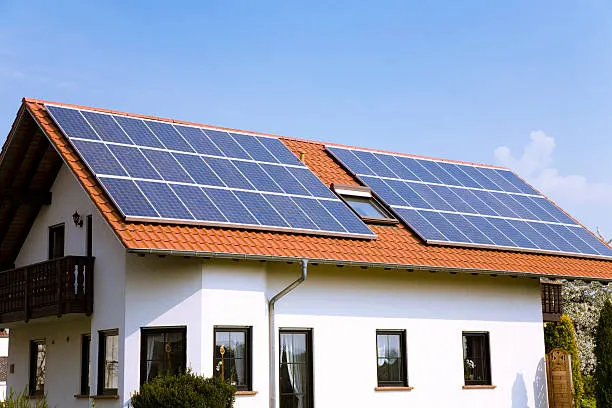As solar energy becomes more popular worldwide, many people are installing solar systems to power their homes and businesses. But beyond the solar panels themselves, a solar setup includes several crucial components that ensure efficiency, safety, and reliability — namely, solar inverters, batteries, and charge controllers.
In this article, we’ll break down how these three components work, why they are essential to any solar power system, and how they help you get the most out of your renewable energy investment.
☀️ The Core Components of a Solar Power System
A solar system doesn’t just consist of panels. While the solar panels capture sunlight and convert it into direct current (DC) electricity, that energy still needs to be stored, converted, and regulated before it can power your appliances. That’s where the inverter, battery, and charge controller come in.
Each plays a unique and vital role in ensuring your solar power system runs smoothly and efficiently.
⚡ Solar Inverters: Converting DC to AC Power
The solar inverter is often referred to as the heart of a solar power system. Its main job is to convert the DC electricity produced by solar panels into AC (alternating current) — the type of electricity used by most household and industrial appliances.
🔋 Types of Solar Inverters:
- String Inverters: Common in residential systems, these connect a “string” of solar panels to one inverter.
- Microinverters: Installed on each panel, offering higher efficiency and independent performance.
- Hybrid Inverters: Combine the functions of a solar inverter and battery inverter, managing both grid and battery connections seamlessly.
- Central Inverters: Typically used for large-scale commercial or industrial solar installations.
🌞 Why Inverters Are Important:
- Maximize energy conversion efficiency
- Monitor power generation and system performance
- Ensure grid compatibility and safety
- Provide smart connectivity (in modern solar systems)
A high-quality inverter not only improves system performance but also extends the life of your solar setup.
🔋 Solar Batteries: Storing Energy for Later Use
Solar energy production doesn’t always align with energy consumption. You may generate more electricity during the day than you use — and that’s where solar batteries come in.
Solar batteries store excess power generated during the day so you can use it at night or during cloudy days, ensuring consistent and reliable energy availability.
🧩 Types of Solar Batteries:
- Lead-Acid Batteries: Cost-effective and widely used but require regular maintenance.
- Lithium-Ion Batteries: High efficiency, long lifespan, and low maintenance — ideal for modern systems.
- Flow Batteries: Emerging technology offering long-duration storage and deep cycling capabilities.
⚙️ Benefits of Solar Battery Storage:
- Backup power during grid outages
- Reduced dependence on the grid
- Lower electricity bills through energy self-consumption
- Better utilization of generated solar power
By pairing solar panels with efficient batteries, you can maximize savings and achieve greater energy independence.
⚙️ Charge Controllers: Protecting Your System and Batteries
The solar charge controller (also called a charge regulator) acts as the system’s protector. It regulates the voltage and current coming from the solar panels to the batteries, preventing overcharging, over-discharging, or damage to the battery bank.
🔌 Types of Charge Controllers:
- PWM (Pulse Width Modulation): Simple, affordable, and suitable for smaller systems.
- MPPT (Maximum Power Point Tracking): Advanced technology that maximizes energy harvest from the panels — ideal for larger, more efficient setups.
🔋 Key Functions of Charge Controllers:
- Protect battery health and extend lifespan
- Prevent system overloads
- Improve overall system efficiency
- Manage energy flow between panels and batteries
Without a reliable charge controller, even the best solar batteries can degrade quickly.
🌞 How These Components Work Together
To understand how the system functions as a whole, let’s look at the energy flow:
- Solar panels absorb sunlight and convert it into DC electricity.
- The charge controller regulates and channels this energy safely to the battery bank for storage.
- The inverter then converts stored or real-time DC power into AC electricity to run appliances.
- Any excess electricity can be exported to the grid or used later from the battery.
Together, these components form a balanced and efficient solar energy ecosystem, ensuring stable power supply and maximum system performance.
🧠 Tips for Choosing the Right Components
When building or upgrading your solar power system, consider the following:
- Inverter Size and Type: Match your system capacity and energy needs.
- Battery Capacity: Choose based on your daily consumption and desired backup duration.
- Charge Controller Rating: Ensure it’s compatible with your panel voltage and battery type.
- Quality and Warranty: Always invest in trusted brands with proven performance and support.
Working with a certified solar installer can help you make the best technical and financial decisions.
✅ Key Takeaways
- Inverters convert solar power into usable electricity.
- Batteries store energy for backup and nighttime use.
- Charge controllers protect and optimize system performance.
- A well-designed solar setup ensures maximum efficiency, safety, and long-term savings.
☀️ Final Thoughts
Understanding the key components of your solar power system — the inverter, battery, and charge controller — is essential for maximizing your solar investment. These elements work together to ensure that every ray of sunlight is converted, stored, and utilized efficiently.
Whether you’re powering a home, a business, or an entire facility, knowing how your solar system functions empowers you to make smarter, more sustainable energy choices for a brighter future.

